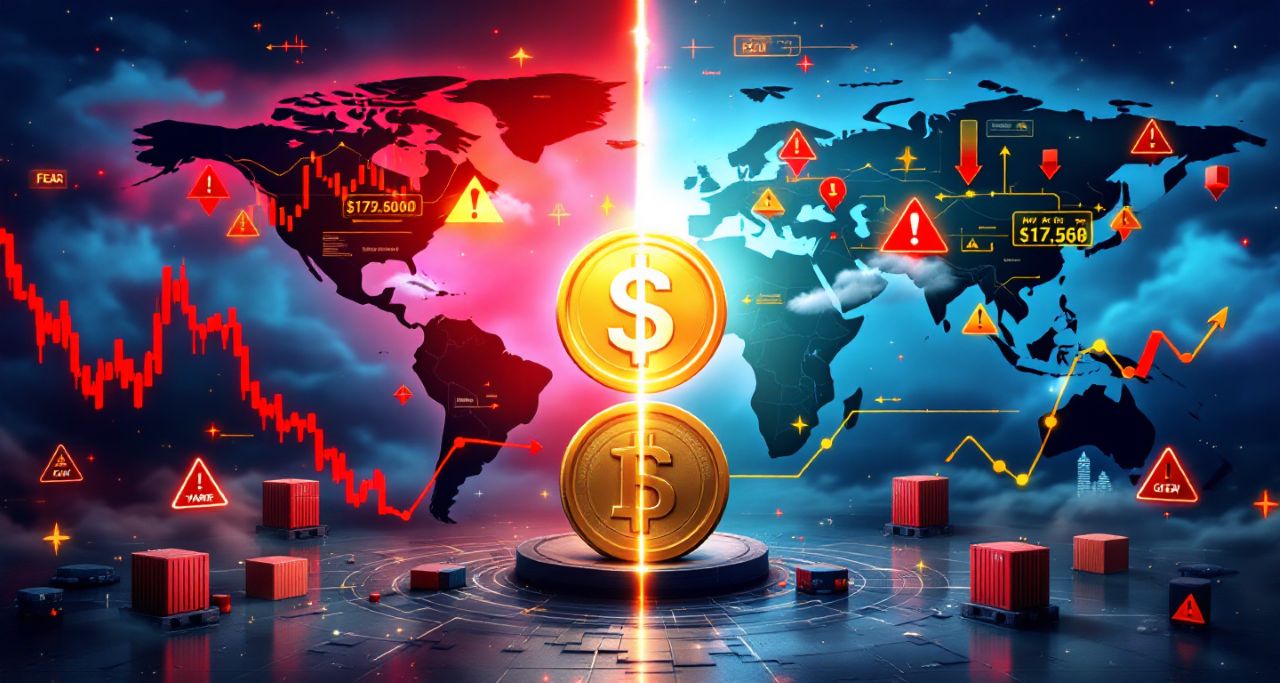
As the clock ticks toward April 2, 2025—what President Donald Trump has dramatically dubbed “Liberation Day”—global markets brace for what could be the most significant escalation in international trade tensions since the 1930s.
Tomorrow marks the implementation of sweeping tariffs that Trump promises will “free” the American economy from what he characterizes as decades of exploitation by foreign trade partners.
“For too long, other countries have taken advantage of America’s generosity,” Trump told reporters at a White House briefing yesterday. “Tomorrow, we take back control of our economic destiny.”
The president’s plan centers on “reciprocal tariffs” that will match or exceed the duties other nations impose on U.S. exports. While specific details remain shrouded in strategic ambiguity, White House sources indicate the tariffs could range from 10% to 25% across a broad spectrum of imported goods, with no country exemptions.
The Global Ripple Effect
Financial markets have already registered their anxiety. Asian markets plummeted overnight, with Japan’s Nikkei dropping 4% and South Korea’s Kospi falling 3%. European markets followed suit, with Germany’s DAX down 1.3% and France’s CAC losing 1.6%. Gold prices have surged past $3,100 per ounce—a historic high—as investors flee to safe-haven assets.
“What we’re seeing is unprecedented uncertainty,” says Elaine Wu, chief market strategist at Global Investment Partners. “The market hates uncertainty, and right now, no one knows exactly what will happen tomorrow or how severe the global response will be.”
The European Union has been particularly vocal in its opposition. European Commission President Ursula von der Leyen warned that the tariffs would be “bad for businesses” and “worse for consumers” while signaling that the EU is prepared to impose counter-tariffs on up to $28 billion of U.S. goods.
“The EU will continue to seek negotiated solutions, while safeguarding its economic interests,” von der Leyen stated, in what many interpret as a diplomatic way of saying “we’ll hit back hard.”
The North American Fallout
Canada and Mexico, America’s largest trading partners, find themselves in particularly precarious positions. Canadian Prime Minister Mark Carney didn’t mince words, describing Trump’s moves as a “direct attack” on Canadian workers.
“We will fight the U.S. tariffs with retaliatory trade actions of our own that will have maximum impact in the United States and minimum impacts here in Canada,” Carney declared, announcing 25% retaliatory tariffs worth nearly $21 billion on U.S. goods.
Mexico has been more measured in its public response, perhaps hoping to de-escalate tensions, but sources within the Mexican government indicate that retaliatory measures are being prepared.
Economic Consequences at Home
While Trump frames the tariffs as a win for American manufacturing and jobs, economists and industry leaders paint a more complex picture.
“The tariffs imposed today will make it more expensive to produce and sell cars in the United States, ultimately leading to higher prices,” warned Jennifer Safavian, president and CEO of Autos Drive America, referring to the 25% tariff on auto imports set to take effect April 3.
With approximately half of all U.S. consumer goods coming from abroad, economists fear that adding tariffs on imported goods will raise inflation as importers pass on costs to consumers. Consumer sentiment across the U.S. had already fallen sharply in March to its lowest level since 2021, according to data released last week.
Goldman Sachs recently raised its estimate for the probability of a U.S. recession during the next 12 months to 35%, up from 20% previously, citing the potential economic fallout from the tariffs.
A Strategic Gamble
Trump’s economic team, led by hardline trade advisers, argues that short-term pain will lead to long-term gain. They contend that the tariffs will force other countries to lower their trade barriers, ultimately creating a more level playing field for American businesses.
“This is about fairness,” said White House trade adviser Peter Navarro on Sunday. “Other countries have been charging us tariffs for decades while we’ve kept our markets open. That ends tomorrow.”
Navarro claimed the tariffs could raise $600 billion annually, which would imply an average rate of about 20% across all imports—a figure many economists find implausible.
What Happens Next?
As “Liberation Day” dawns, several scenarios could unfold. Trump might implement the full range of threatened tariffs, triggering immediate retaliation from trading partners and potentially setting off a global trade war reminiscent of the one that deepened the Great Depression.
Alternatively, the president might use the threat of tariffs as leverage to extract concessions in future negotiations, a tactic he employed frequently during his first term.
“Trump is a dealmaker at heart,” says Robert Lighthizer, former U.S. Trade Representative. “He’s creating maximum pressure to get other countries to the table. The question is whether they’ll blink first.”
For American consumers and businesses caught in the crossfire, tomorrow marks the beginning of a new and uncertain economic era—one that will test the resilience of global supply chains and potentially reshape international trade for decades to come.
Whether April 2, 2025, will be remembered as a day of economic liberation or the trigger for global economic chaos remains to be seen. But one thing is certain: the world economy will never be quite the same again.
